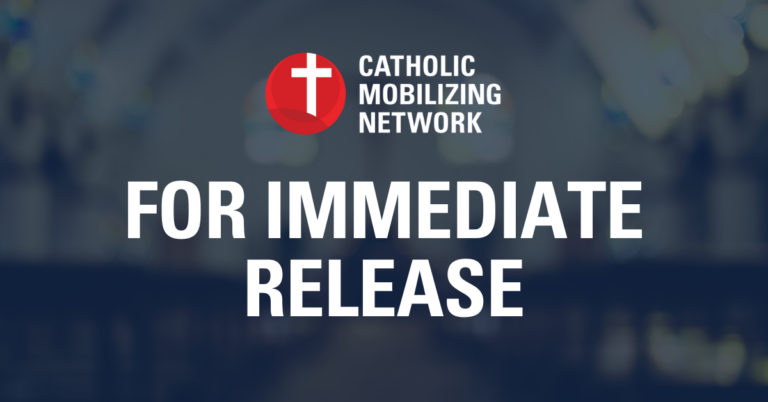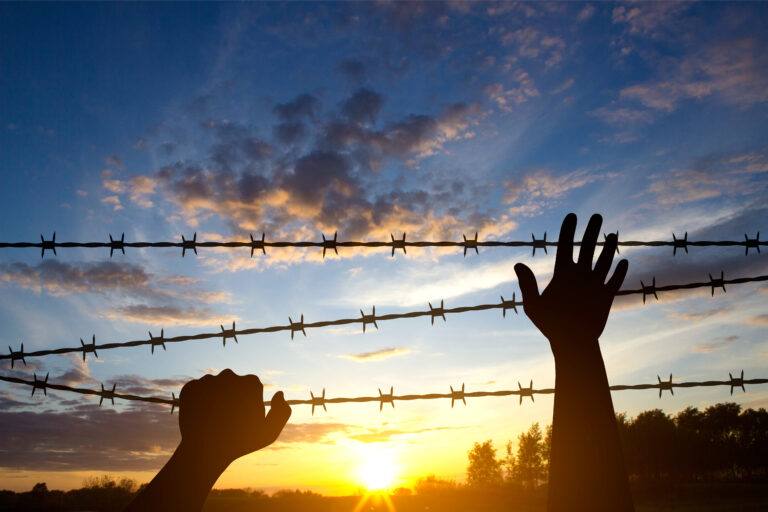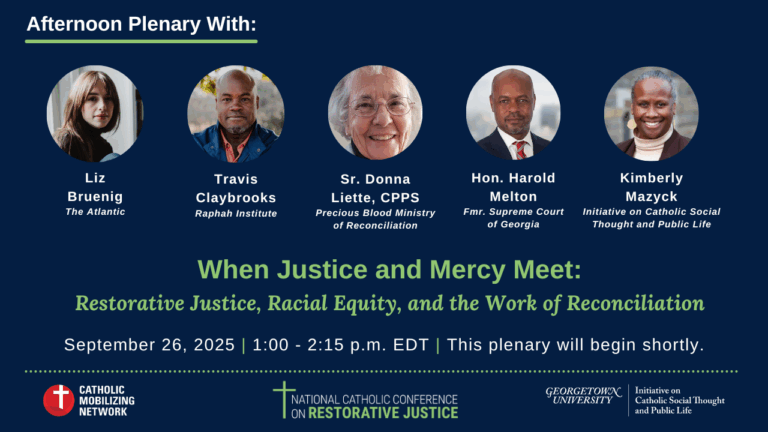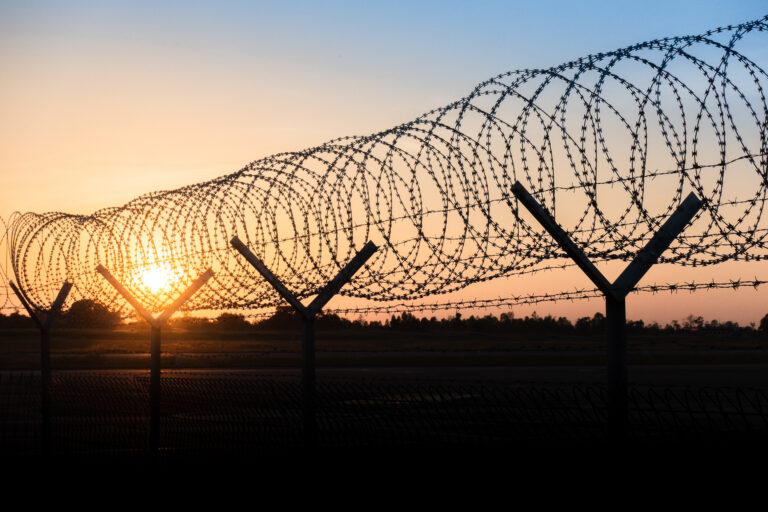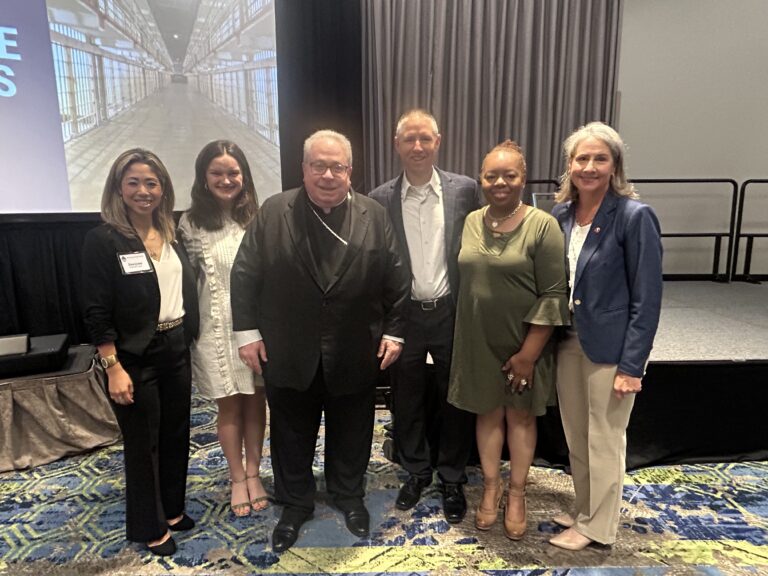Death Penalty Quarterly | April 2025
The decades-long movement to end the death penalty has experienced ebbs and flows — moments of progress and moments of setbacks. What we know from this movement, however, is that despite setbacks, the trajectory continues to move toward abolition.
This Holy Week, it is especially poignant to remember that we are a Resurrection people. Current regressions at the state level may remind us of the desert of Lent. Yet we must remember that the hope of Easter does come. Let us continue to be resolved in that hope, particularly as we journey through the Jubilee Year.
Below are significant developments from the past quarter, key insights, and CMN’s focus areas for the coming months. I invite you to join us in the work that lies ahead.
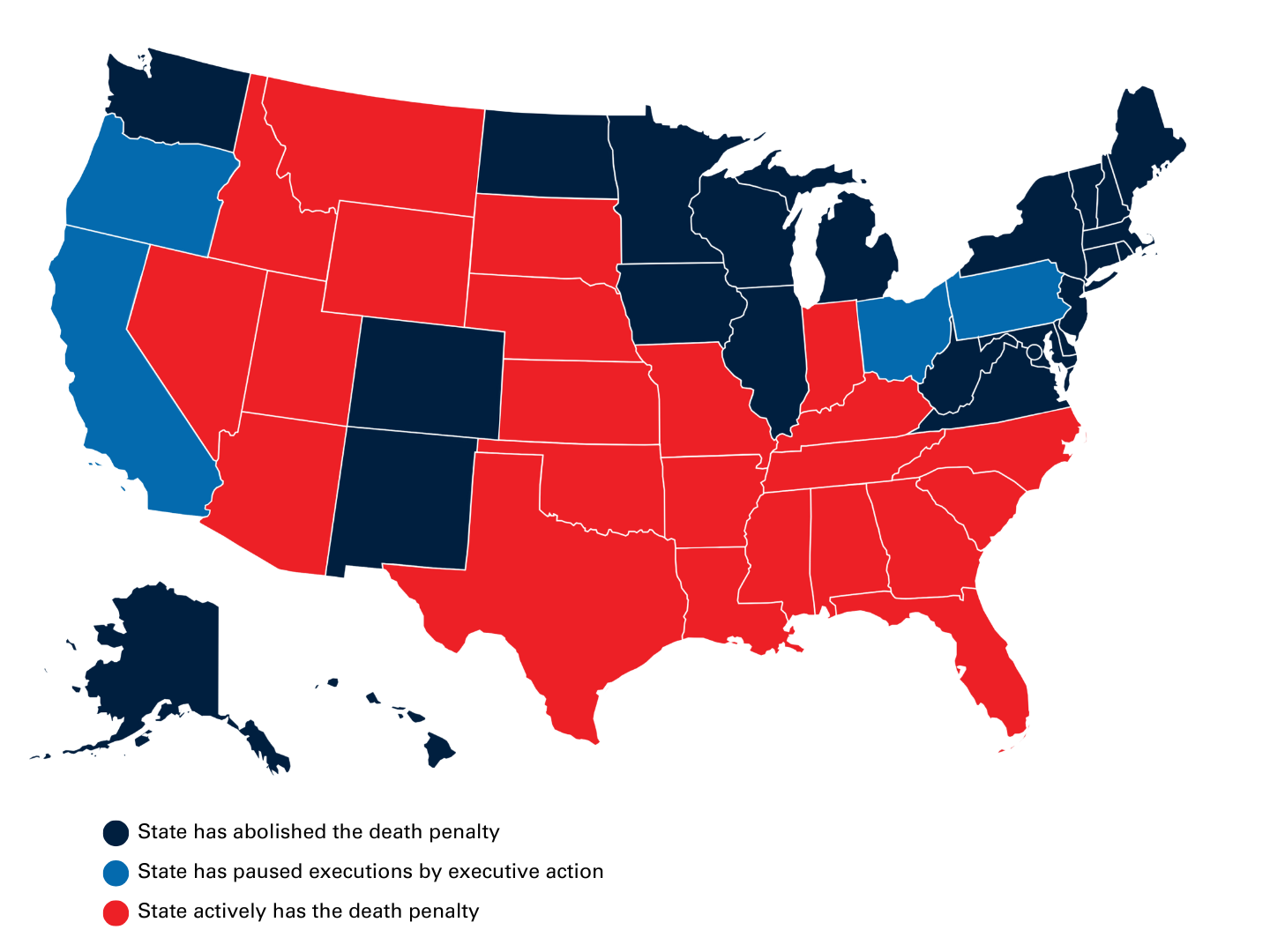
By the Numbers
23 non-death penalty states
27 death penalty states, 4 of which have paused executions by executive action
12 executions carried out so far in 2025 across 7 states
200 people have been exonerated from death row since 1973

EXECUTION METHODS
Several states have recently adopted new execution methods. This is due in part to the ongoing difficulty for states to procure lethal injection drugs, as pharmaceutical companies have become unwilling to sell their products to be used to kill.
Nitrogen Gas Suffocation
Alabama introduced the method of nitrogen gas suffocation to the world with the January 2024 execution of Kenny Smith. This method of killing requires an individual to breathe pure nitrogen gas through a fitted gas mask until the lack of oxygen causes them to suffocate to death.
- Louisiana became the second state to use this method, killing Jessie Hoffman on March 18.
- Nitrogen gas suffocation has been adopted as a method of execution in four states.
- Five individuals have been killed by this method, which veterinary scientists have largely rejected as an appropriate method to kill animals.
“What this represents is forced asphyxiation, gassing a subject to death, exposing him to a lack of oxygen such that both extreme discomfort, distress, pain, and terror would be felt all the way up to the point of losing consciousness.”
— Dr. Philip Bickler, Board-Certified Anesthesiologist and expert in the fields of Anesthesiology and Human Hypoxia
Firing Squad
The execution of Brad Sigmon in South Carolina on March 7 marked the first time since 2010 that a person was executed by firing squad. It was also the first time that South Carolina used this method. South Carolina’s firing squad procedures require an individual to be strapped to a chair with a hood over their head. A target is placed over their heart, and they are shot by three rifles simultaneously from a close distance.
South Carolina asks those slated for death to choose the method by which the state will kill them. Given the choices of lethal injection, the electric chair, and a firing squad, some individuals have chosen the latter out of a desperate hope that it will cause them the least amount of suffering.
How cruel that we have asked individuals to make this impossible decision?
- Utah is the only other state to have carried out a firing squad execution since 1976.
- Firing squad has been adopted as a method of execution in five states.
- Two men have been executed in South Carolina by firing squad.

RESUMING STATES
Several states are taking the regressive steps to resume executions after years without them.
- Louisiana executed Jessie Hoffman on March 18 after 15 years without an execution in the state.
- This return to executions comes under the direction of a Catholic Governor and former state Attorney General, Jeff Landry, who is vocally supportive of the death penalty and expansions of its use.
- This pro-death penalty stance follows a campaign last year for death row commutations in Louisiana, which was supported by then-Governor John Bel Edwards, also Catholic, but was ultimately blocked.
- Arizona resumed executions on March 19, taking the life of Aaron Gunches, despite previous criticism of flawed procedures and three botched executions in 2022.
- Mr. Gunches was known as a death penalty “volunteer” — someone who asks for their own death at the hands of the state by dropping all appeals. Such instances beg the question: Is this not a state-assisted suicide?
- Retired federal magistrate Judge David Duncan, initially hired and then suddenly fired by Arizona Governor Katie Hobbs to review the state’s execution protocol, continues to voice serious concerns about the state’s lethal injection procedures.
“Accordingly, the resumption of capital punishment in Arizona… furthers a culture of death that is all too common in our society and is something that we are called to reject.”

LEGISLATION
Legislative Progress
- Georgia unanimously passed a bill to provide pretrial hearings for capital defendants to raise intellectual disability claims and lower the standard of proof for those claims.
- Oklahoma execution moratorium moves forward. A bill that would halt executions until June 1, 2027 has passed through the Senate Judiciary Committee in a 5-3 vote. The bill is supported by two Democratic and three Republican Senators.
- Ohio is considering two bills, both of which would abolish the death penalty in the state if passed. Advocates are strongly pushing this legislation now before anti-death penalty Governor Mike Dewine leaves office at the end of his term.
Regressive Legislation
- Arkansas passed a bill authorizing nitrogen gas suffocation as an execution method.
- Idaho passed a bill designating the firing squad as the state’s primary method of execution.
- Idaho passed a bill allowing the death penalty for individuals convicted of sexually abusing young children.
- This bill was passed despite the fact the a U.S. Supreme Court decision in 2008, Kennedy v. Louisiana, blocked death penalties for child rape.
- Florida passed a bill requiring the automatic imposition of the death penalty for “unauthorized aliens” convicted of a capital offense.
- This bill was passed despite established and longstanding U.S. precedent and international law prohibiting mandatory death sentences.
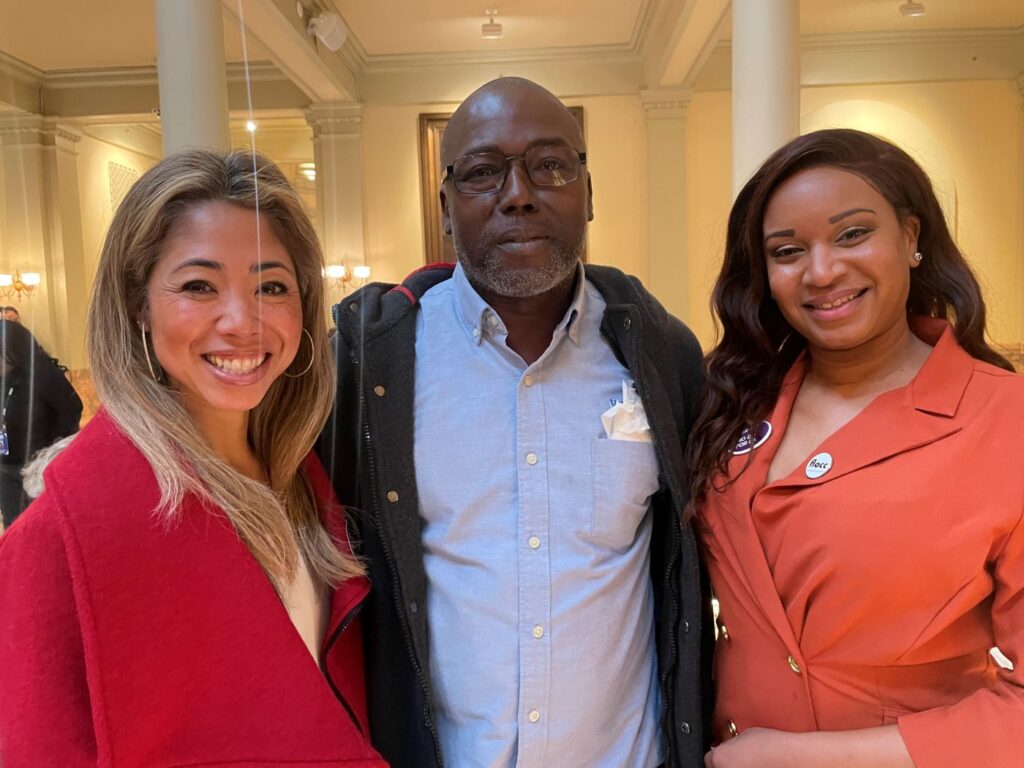

FEDERAL DEATH PENALTY
On his first day in office, President Donald Trump issued an Executive Order entitled, “Restoring the Death Penalty and Protecting Public Safety.” The order contradicts the Gospel’s teaching and the Church’s guidance that every life is sacred and deserving of dignity. Soon after, Attorney General Pam Bondi issued a memorandum supporting President Trump’s vision for the use of capital punishment at the federal level.
While the federal government seeks to expand and expedite capital punishment, it’s unlikely that we will see any federal executions given the appeals remaining before the three individuals who are on the federal death row.
On April 1, Bondi directed federal prosecutors to seek the death penalty for Luigi Mangione, who is accused of shooting UnitedHealthcare CEO Brian Thompson. Bondi says this is an effort to “carry out President Trump’s agenda to stop violent crime and make America safe again.”
Mangione faces both state and federal charges, including terrorism related offenses and federal firearm violations — only the federal charges make him eligible for capital punishment.

GOOD NEWS
- David Wood (scheduled for execution on Mar. 13) was granted a stay of execution from the Texas Court of Criminal Appeals. The Court did not offer an explanation, but Wood’s legal team had long has been fighting for DNA testing in the case. The stay was granted just 48 hours before his scheduled execution.
- Alabama Governor Kay Ivey commuted the sentence of Robin “Rocky” Dion Myers from death to life in prison without parole. It was the first time Gov. Ivey issued such a commutation. Myers’ jury had recommended life without parole, but the judge overrode the decision and imposed a death sentence instead.
- “I am not convinced that Mr. Myers is innocent, but I am not so convinced of his guilt as to approve of his execution,” said Gov. Ivey.

WHERE HAS CMN BEEN THIS SPRING?
CMN has traveled across the country this Spring for death penalty education events. Check out where we have been!
- Anaheim, CA — CMN participated in the Los Angeles Religious Education Congress, including a prayer march and public witness to call for an end to the death penalty.
- Miami, FL — Emmjolee Mendoza Waters visited Barry University as part of CMN’s Next Gen for Justice Catholic College Speaking Tour.
- South Bend, IN — Krisanne Vaillancourt Murphy and Emmjolee Mendoza Waters participated in the University of Notre Dame Law School’s inaugural Death Penalty Abolition Week, featuring Sr. Helen Prejean, CSJ and Vicki and Syl Schieber.
- Missouri — Krisanne Vaillancourt Murphy and Emmjolee Mendoza Waters traveled to Rockhurst University and St. Louis University as part of CMN’s Next Gen for Justice Catholic College Speaking Tour. They also participated in a panel discussion with the Incarnate Word Foundation in St. Louis.

IN MEMORIAM
“I want my closing statement to be one of love and a calling to my fellow Christians to help us end the death penalty.”
— The final words of Brad Sigmon before his execution in South Carolina on March 7, 2025
We pray for those who have been executed these past three months: Marion Bowman (SC), Steven Nelson (TX), Demetrius Frazier (AL), James Ford (FL), Richard Tabler (TX), Brad Sigmon (SC), Jessie Hoffman Jr. (LA), Aaron Gunches (AZ), Wendell Grissom (OK), Edward James (FL), Michael Tanzi (FL), and Mikal Mahdi (SC).
We also pray in a special way for the victims who lost their lives to acts of violence.

